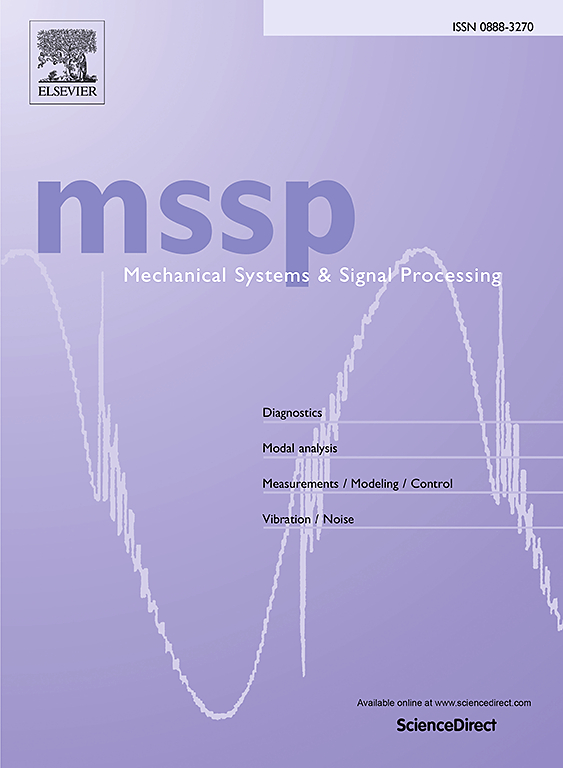Online assessment of degradation status for metro wheel with robust unsupervised tensor domain adaptation
IF 7.9
1区 工程技术
Q1 ENGINEERING, MECHANICAL
引用次数: 0
Abstract
With on-board collected vibration signals, machine learning-assisted metro wheel’s degradation status assessment has received sustained attention in most recent years. Despite promising advances, the acquired vibration signals, heavily interfered by irregular noise due to various factors like road condition, vehicle load and uneven tread, etc., will block the deployment of current assessment methods in open environment. Moreover, existing methods are merely capable of realizing status assessment using offline data within a turning repair cycle, but fail to achieve online assessment that is crucial to actual maintenance. This paper incorporates the concept of transfer learning into metro wheel health management. We identify two major challenges in evaluating wheel degradation status: (1) imprecise representation of degradation characteristics with real-world signals, and (2) lack of common degradation trajectory on the same metro line. To address these challenges, this paper proposes an online assessment approach of wheel degradation status based on unsupervised deep transfer learning, including a robust unsupervised tensor domain adaptation network (RUTDAN) for cross-wheel degradation feature extraction and an online early warning mechanism based on the common health indicator of different wheels. Extensive experiments are conducted with the real-world monitoring data collected from Metro Line 6 of Beijing Subway. The degradation status of target wheel is evaluated with online sequential data, while the results precisely match the actual maintenance records in terms of wheel diameter value.
基于鲁棒无监督张量域自适应的地铁车轮退化状态在线评估
利用车载采集的振动信号,机器学习辅助地铁车轮退化状态评估近年来一直受到人们的关注。尽管取得了很好的进展,但由于路况、车辆载荷、胎面不平等各种因素,采集到的振动信号受到不规则噪声的严重干扰,阻碍了现有评估方法在开放环境中的部署。此外,现有的方法只能实现在一个车削修理周期内使用离线数据进行状态评估,而无法实现对实际维修至关重要的在线评估。本文将迁移学习的概念引入地铁车轮健康管理中。我们确定了评估车轮退化状态的两个主要挑战:(1)退化特征与现实世界信号的不精确表示;(2)在同一条地铁线路上缺乏共同的退化轨迹。为了解决这些问题,本文提出了一种基于无监督深度迁移学习的车轮退化状态在线评估方法,包括用于跨轮退化特征提取的鲁棒无监督张量域自适应网络(RUTDAN)和基于不同车轮共同健康指标的在线预警机制。利用北京地铁6号线实际监测数据进行了大量实验。利用在线序列数据对目标车轮的退化状态进行评估,结果与实际维修记录的车轮直径值吻合较好。
本文章由计算机程序翻译,如有差异,请以英文原文为准。
求助全文
约1分钟内获得全文
求助全文
来源期刊

Mechanical Systems and Signal Processing
工程技术-工程:机械
CiteScore
14.80
自引率
13.10%
发文量
1183
审稿时长
5.4 months
期刊介绍:
Journal Name: Mechanical Systems and Signal Processing (MSSP)
Interdisciplinary Focus:
Mechanical, Aerospace, and Civil Engineering
Purpose:Reporting scientific advancements of the highest quality
Arising from new techniques in sensing, instrumentation, signal processing, modelling, and control of dynamic systems
 求助内容:
求助内容: 应助结果提醒方式:
应助结果提醒方式:


